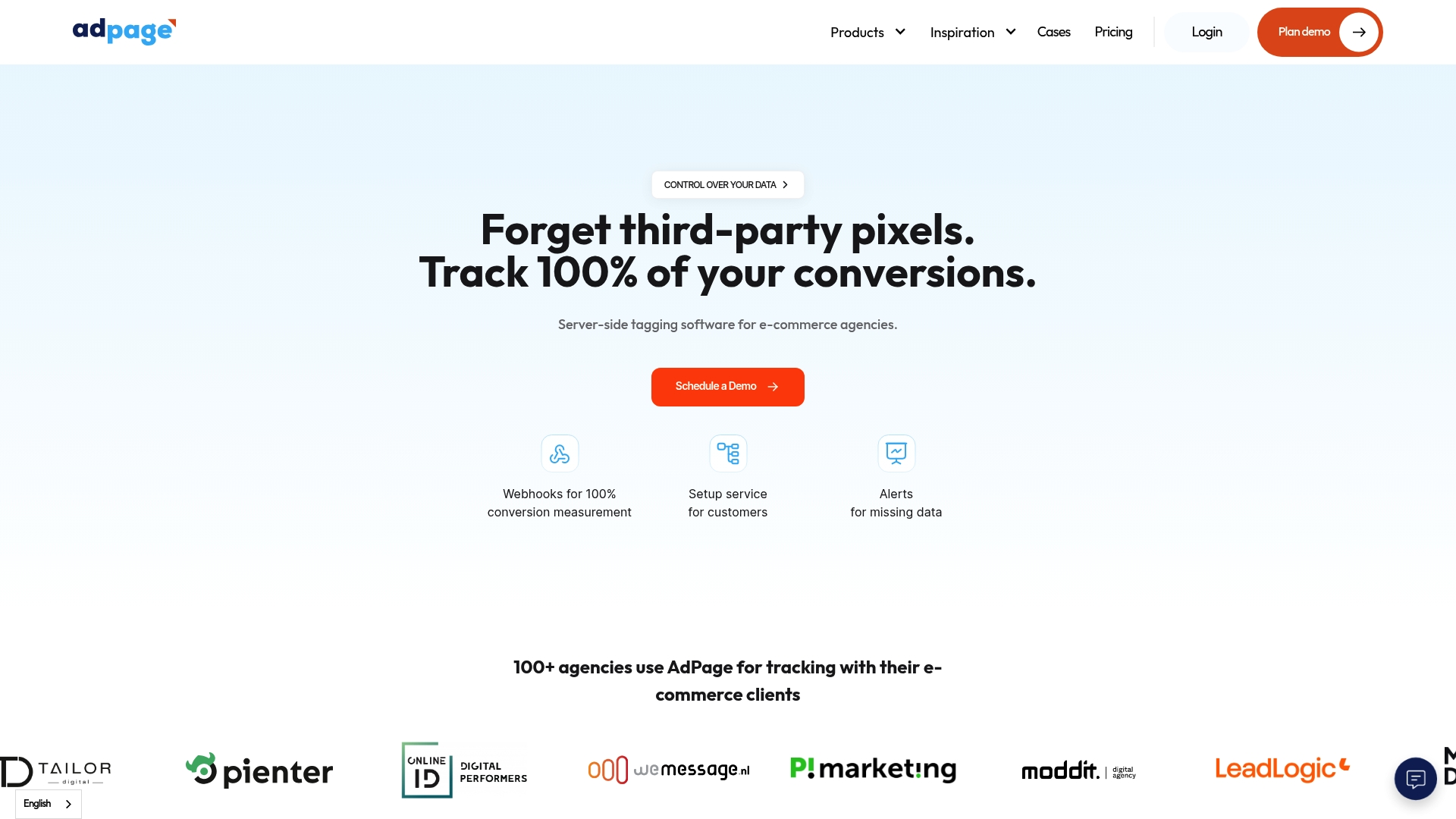Did you know that businesses can see over 200 percent variation in reported Return on Advertising Spend depending on how they measure it? Understanding ROAS is vital if you want real insight into what your ad budget actually delivers. With new tools and smarter analytics, marketers can now spot hidden patterns and uncover the true value behind every pound spent on ads.
Key Takeaways
| Point | Details |
|---|---|
| Understanding ROAS | Return on Advertising Spend (ROAS) gauges the revenue generated per pound spent on advertising, providing insight into advertising effectiveness. |
| Incremental ROAS (iROAS) | iROAS offers a deeper understanding of advertising impact by using causal analysis through controlled experiments, moving beyond basic revenue metrics. |
| Factors Influencing Accuracy | Accuracy in ROAS calculations can be affected by ad targeting bias, model limitations, and data collection challenges; addressing these biases is crucial for reliable insights. |
| Server-Side Tagging Benefits | Implementing server-side tagging enhances data accuracy and tracking reliability, allowing for more comprehensive analysis of advertising performance. |
Table of Contents
- Defining Return on Advertising Spend Metrics
- Types of ROAS Calculations and Variations
- Key Factors Influencing ROAS Accuracy
- Enhancing ROAS Tracking With Server-Side Tagging
- Common Pitfalls and Misconceptions in ROAS
Defining Return on Advertising Spend Metrics
Return on Advertising Spend (ROAS) represents a crucial performance metric that reveals how effectively your advertising budget translates into revenue. At its core, ROAS measures the financial return generated for every pound invested in advertising campaigns. Think of it like a financial fitness tracker for your marketing efforts.
According to research from incremental ROAS studies, the metric goes beyond simple revenue tracking. Incremental Return on Ad Spend (iROAS) provides a more nuanced perspective by examining the causal relationship between marketing strategies and response metrics. This approach allows marketers to understand the genuine impact of their advertising, moving beyond surface-level numbers.
Key components of ROAS calculation typically include:
- Total revenue generated from advertising
- Direct advertising costs
- Conversion rates
- Campaign-specific expenses
Read more about optimising ad performance requires understanding these fundamental metrics. Research suggests that sophisticated marketers are increasingly using controlled experiments to validate their advertising effectiveness, comparing causal effects on response metrics against advertising expenditure.
Practically speaking, a ROAS of 3:1 means that for every pound spent on advertising, you’re generating three pounds in revenue. While this might sound straightforward, modern analytics reveal the complexity behind truly understanding advertising performance.
Types of ROAS Calculations and Variations
Traditional ROAS calculations offer a straightforward approach to measuring advertising effectiveness, typically dividing total revenue generated by advertising spend. However, modern research reveals multiple nuanced approaches that provide deeper insights into marketing performance.
According to research on incremental Return on Ad Spend, Incremental ROAS (iROAS) represents a more sophisticated metric. Unlike traditional calculations, iROAS uses randomized paired geo experiments to measure the actual causal impact of advertising. This method helps marketers understand the true incremental value beyond surface-level revenue numbers.
Key ROAS calculation variations include:
Here’s a summary of the main ROAS calculation approaches:
| ROAS Type | Calculation Method | Key Insight |
|---|---|---|
| Standard ROAS | Revenue ÷ Advertising spend | Basic effectiveness measure |
| Incremental ROAS (iROAS) | Causal effect using experiments | True incremental impact |
| Media Mix Modelling ROAS | Statistically corrected measurement | Adjusted for multi-channel influences |
| Lifetime Value ROAS | Revenue across customer journey | Long-term value assessment |
- Standard ROAS: Total revenue ÷ Advertising spend
- Incremental ROAS (iROAS): Causal effect of advertising on response metrics
- Media Mix Modeling ROAS: Statistically corrected advertising impact measurement
- Lifetime Value ROAS: Calculating returns across customer’s entire engagement period
Learn more about conversion rate optimization strategies to complement your ROAS analysis. Research from advanced media modeling suggests that simply dividing revenue by ad spend can miss critical nuances. Sophisticated marketers now use statistical techniques to correct potential biases, ensuring a more accurate representation of advertising effectiveness.
Key Factors Influencing ROAS AccuracyMeasurement accuracy in advertising return analysis is far more complex than simply plugging numbers into a formula. Research reveals multiple intricate factors that can dramatically impact the reliability of your Return on Advertising Spend calculations.
Research on media mix modeling highlights critical challenges in ROAS estimation, particularly around selection bias. When ad targeting creates inherent skews in data collection, traditional measurement techniques can produce misleading results. Sophisticated marketers must account for potential distortions that emerge from how advertisements are initially targeted and measured.
Key factors affecting ROAS accuracy include:
- Ad Targeting Bias: How initial audience selection impacts measurement
- Model Specification Limitations: Statistical errors in calculation methods
- Data Collection Interference: Challenges in isolating true advertising impact
- Experimental Design Constraints: Methodological limitations in tracking
Explore advanced campaign performance analysis to understand these nuances. According to cutting-edge research using randomized experiments like paired geo testing, establishing causal inference becomes crucial. These methods help reduce interference and heterogeneity issues, providing a more precise understanding of an advertising campaign’s genuine economic contribution.
![]()
Ultimately, achieving accurate ROAS requires a multi-dimensional approach that goes beyond simple revenue-to-spend ratios. Statistical rigor, carefully designed experiments, and an understanding of potential measurement biases are essential for marketers seeking true insight into their advertising effectiveness.
Enhancing ROAS Tracking with Server-Side Tagging
Server-side tagging represents a powerful evolution in digital marketing analytics, offering marketers unprecedented precision in tracking advertising performance. Unlike traditional client-side tracking, which relies on browser-based scripts, server-side tagging moves critical data processing to a secure server environment, dramatically improving data collection accuracy and reliability.
The primary advantage of server-side tagging lies in its ability to overcome common tracking limitations. Conversion tracking becomes more robust as server-side methods can capture data points that might be blocked by browser privacy settings, ad blockers, or cookie restrictions. This means your ROAS calculations can capture a more comprehensive view of user interactions and campaign performance.
Key benefits of server-side tagging for ROAS tracking include:
- Enhanced data accuracy and completeness
- Improved protection against tracking prevention technologies
- Reduced reliance on third-party cookies
- More secure handling of sensitive conversion data
- Better performance and faster page load times
Read more about server-side tagging advantages to understand how this approach can transform your marketing analytics. By moving tracking logic to a controlled server environment, marketers can ensure more reliable data collection, reduce potential tracking gaps, and generate more precise insights into advertising spend effectiveness.
Implementing server-side tagging requires careful technical configuration, but the potential improvements in ROAS measurement make it a compelling strategy for data-driven marketing teams seeking more reliable performance insights.

Common Pitfalls and Misconceptions in ROAS
ROAS misinterpretation represents a significant challenge for marketers seeking genuine insights into advertising performance. Many professionals mistakenly view Return on Advertising Spend as a straightforward metric, when in reality, it requires nuanced understanding and careful analysis.
According to research on media mix modeling, one of the most critical misconceptions is assuming that raw ROAS figures directly reflect advertising effectiveness. The study highlights how ad targeting selection and observational data limitations can introduce substantial biases, leading marketers to draw incorrect conclusions about their campaign performance.
Common ROAS pitfalls include:
- Correlation vs Causation: Mistaking statistical correlations for direct advertising impact
- Ignoring External Factors: Failing to account for market trends or seasonal variations
- Oversimplified Calculations: Using basic revenue-to-spend ratios without deeper analysis
- Single-Channel Myopia: Evaluating advertising performance in isolation
Learn about common tracking mistakes to avoid these analytical traps. Research from incremental ROAS studies emphasizes that standard metrics can conflate underlying trends, making it crucial to use controlled experiments that isolate the true causal effect of advertising spending.
Ultimately, sophisticated marketers recognize that ROAS is not a simple number, but a complex metric requiring contextual understanding, statistical rigor, and a holistic view of marketing performance.
Discover the New Standard for Accurate ROAS Tracking
Are you struggling to make sense of your True Return on Advertising Spend? Many marketers find themselves facing unreliable data, hidden tracking gaps, and numbers that just do not add up. The article highlighted how issues like measurement errors, tracking limitations, and data loss can prevent you from really understanding the impact of your advertising spend. If you want to avoid misleading conclusions and finally unlock genuine insights, you need technology that addresses modern tracking challenges and delivers complete visibility for every conversion.

With AdPage, you can experience a smarter way to track and improve your results. Our advanced server-side tagging helps you overcome browser privacy barriers and missing data. Ensure you capture 100 percent of your conversions, achieve compliance with data privacy laws, and connect every touchpoint back to revenue. Break free from incomplete analytics. Visit https://www.adpage.io/en now to see how accurate conversion tracking can improve your ROAS performance. Take the first step toward reliable data and smarter marketing decisions today.
Frequently Asked Questions
What is Return on Advertising Spend (ROAS)?
Return on Advertising Spend (ROAS) is a metric that measures the effectiveness of an advertising campaign by calculating the revenue generated for every unit of currency spent on advertising. A higher ROAS indicates a more effective advertising strategy.
How is ROAS calculated?
ROAS is typically calculated by dividing the total revenue generated from advertising by the total amount spent on that advertising campaign. The formula is: ROAS = Total Revenue ÷ Advertising Spend.
What is Incremental Return on Advertising Spend (iROAS)?
Incremental Return on Advertising Spend (iROAS) is a more advanced metric that assesses the actual impact of advertising by examining causal relationships through experimental methods. It provides a clearer picture of the true value that an advertising campaign brings beyond basic revenue figures.
What factors can influence the accuracy of ROAS calculations?
Factors influencing ROAS accuracy include ad targeting bias, limitations in statistical models, challenges in data collection, and constraints in experimental design. These elements can lead to potential distortions and biases in determining the true effectiveness of advertising efforts.



.png)
